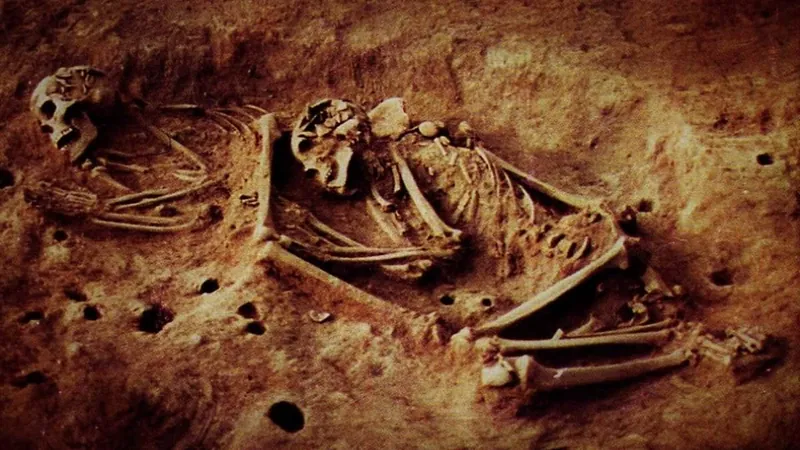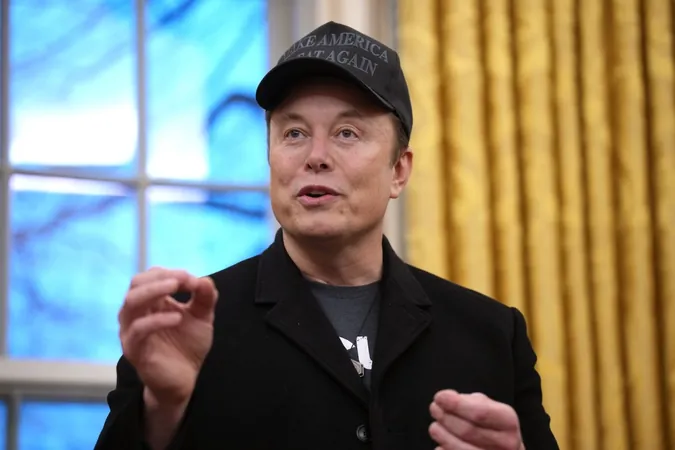
Ancient Skeletons in Colombia Disrupt Historical Narratives with Unmatched DNA
2025-06-07
Author: Yan
Unearthing History: A Discovery That Could Redefine the Past
Archaeologists have stumbled upon a remarkable find in Colombia: 6,000-year-old skeletons belonging to an enigmatic group of hunter-gatherers. These ancient remains, excavated from the preceramic site of Checua near Bogotá, challenge everything we thought we knew about human history.
A Lost Lineage Revelations
What sets these skeletons apart is the DNA. Surprisingly, their genetic makeup does not match any known Indigenous group in the region today. Instead, these individuals seem to come from a now-extinct lineage believed to be descended from some of the earliest humans to step foot in South America—suggesting a unique ancestry that diverged from other populations and remained isolated for millennia.
The Groundbreaking Genetic Study
Researchers meticulously analyzed ancient DNA from 21 individuals who lived in the Bogotá Altiplano over a span of 6,000 years. Their findings unveiled a genetic timeline that showcases a distinct ancestral signature that has entirely vanished from modern DNA pools, raising compelling questions about how these individuals fit into the grand narrative of human migration.
Cultural Crossroads: An Unexpected Shift
Kim-Louise Krettek, lead author of the study, emphasizes the significance of this region. Historically, Checua served as a crucial land bridge between North and South America, intertwining cultural and genetic histories of Mesoamerica, Amazonia, and the Andes. Yet, the study reveals that these early inhabitants bore no genetic connections to other ancient groups found in South America, like those in Chile or Brazil, nor did they relate to North American populations.
A Neighborhood of Genetic Transformation
Around 2,000 years ago, the genetic landscape of the Bogotá highlands underwent a dramatic overhaul. The unique lineage of the Checua people vanished, supplanted by newcomers whose DNA revealed similarities to ancient Panamanians and modern Chibchan speakers in present-day Costa Rica and Panama, indicating a significant cultural shift possibly instigated by migration.
Connecting Language and Culture
Co-author Andrea Casas-Vargas notes that along with these migrations came advancements such as ceramics and the introduction of Chibchan languages still spoken in Central America. This language family continues to survive today, demonstrating the cultural resonance that outlasted the original Checua lineage.
A Mysterious Transition Without Conflict
Interestingly, the transition from the Checua people to the new cultural landscape did not come with the signs of conflict or invasion. Archaeological evidence shows no traces of violence, suggesting that the change could have stemmed from peaceful migration or intermarriage rather than warfare.
Understanding Ancestry: A Complex Picture
Using advanced analysis techniques, scientists uncovered that while Checua males carried a common Native American Y-DNA signature, the rest of their genetic profile indicated profound isolation with no connections to future populations. Over time, as new groups moved in, the unique DNA of the Checua peoples faded away.
Respecting Cultural Identities
Professor Cosimo Posth highlights a crucial point: genetics should not be conflated with cultural identity. The research team has taken steps to engage with the Guardia Indígena Muisca, the present-day descendants of the Muisca culture, showing respect for their community knowledge and fostering dialogue between science and tradition.
A New Frontier in Ancient DNA Research
This groundbreaking research represents Colombia's first exploration of ancient DNA, opening up a treasure trove of potential discoveries. Many neighboring regions, including western Colombia, Venezuela, and Ecuador, remain unexamined, likely holding many more secrets about the waves of human migration that shaped our continent.
As Kim-Louise Krettek points out, the quest for ancient DNA will be essential in piecing together the intricate puzzle of how humans populated South America, with untold stories waiting to be unearthed.


 Brasil (PT)
Brasil (PT)
 Canada (EN)
Canada (EN)
 Chile (ES)
Chile (ES)
 Česko (CS)
Česko (CS)
 대한민국 (KO)
대한민국 (KO)
 España (ES)
España (ES)
 France (FR)
France (FR)
 Hong Kong (EN)
Hong Kong (EN)
 Italia (IT)
Italia (IT)
 日本 (JA)
日本 (JA)
 Magyarország (HU)
Magyarország (HU)
 Norge (NO)
Norge (NO)
 Polska (PL)
Polska (PL)
 Schweiz (DE)
Schweiz (DE)
 Singapore (EN)
Singapore (EN)
 Sverige (SV)
Sverige (SV)
 Suomi (FI)
Suomi (FI)
 Türkiye (TR)
Türkiye (TR)
 الإمارات العربية المتحدة (AR)
الإمارات العربية المتحدة (AR)